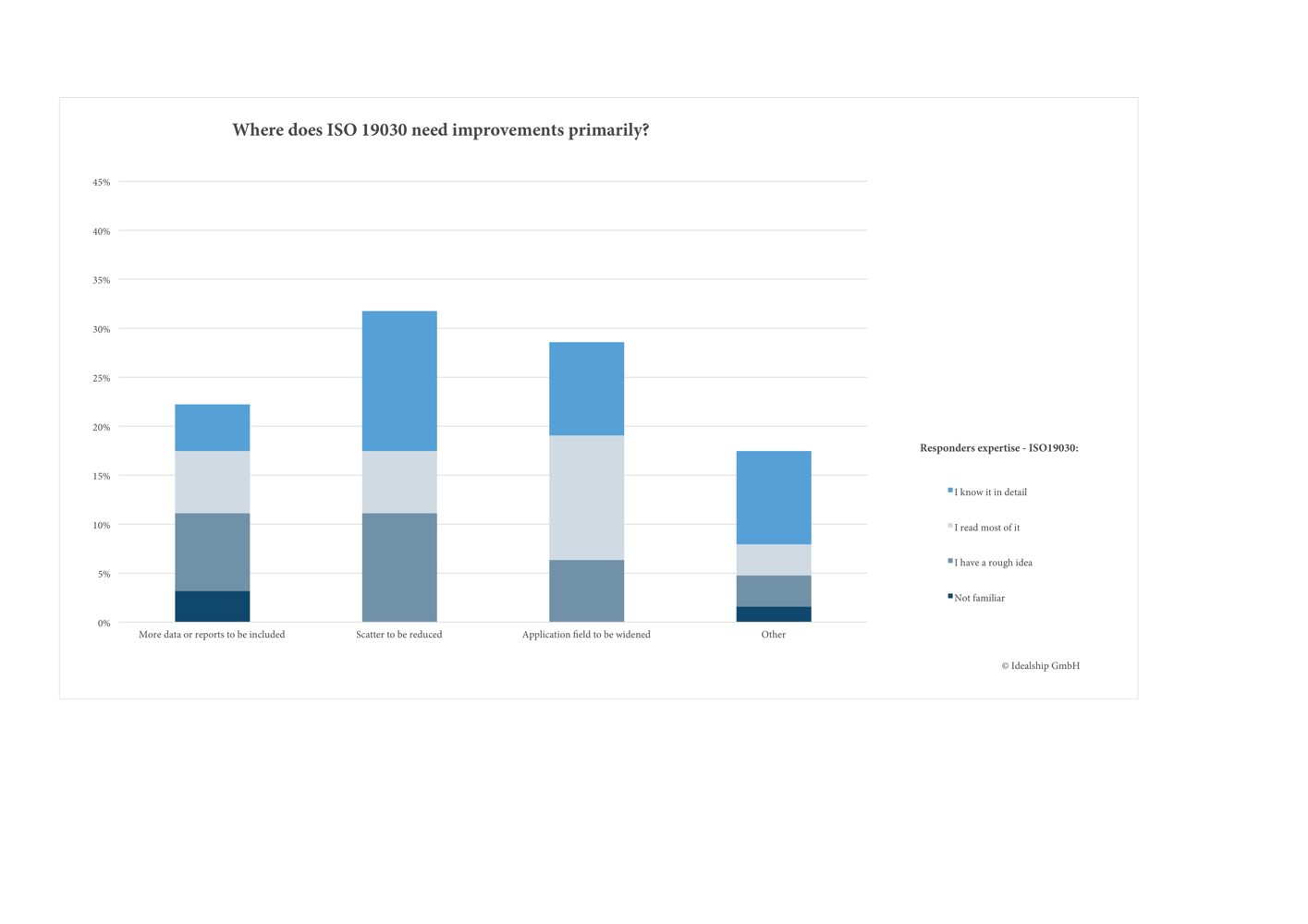ISO 19030 (2016) describes a standard way to assess changing hull and propeller performance. After three years it is now time for the ISO Committee to decide how to proceed with it.
Without data you’re just another person with an opinion« (W. Edwards Deming) … In an era, where the industry talks about[ds_preview] topics that include the term »4.0«, data is a must have. By agreeing on definitions and methodologies to process data, more harmony in the analyses and interpretation can be achieved.
This leads to more trust and acceptance. ISO 19030 describes a standard methodology of hull and propeller performance assessments to analyse retrofit, maintenance and dry-docking effects. The document is divided into three parts. Part 1 outlines general principles, part 2 the default method and part 3 alternatives to the default.
During the development process, the working group found out quickly that analysing hull and propeller performance is complex as one has to deal with many uncertainties. Hence, a significant part of the first part deals with descriptions of how the uncertainties where assessed and what the achievable accuracies are.
As the requirements regarding the measurement accuracy and frequency of the default procedure, described in the 2nd part, reduce the application field of the standard to only a minor part of the world’s fleet, the 3rd part of the document outlines alternative methods, which vary in accuracy and ease of use. Most of these alternatives, however, have a significant lower accuracy than the default method.
Impact on industry
The standard has put the limelight on measuring hull and propeller performance, along with regulations such as MRV. The industry realizes increasingly the importance of data, not just for compliance, also for competitiveness. Major ship operators have used performance monitoring for a long time, but for small and medium ship operators the average awareness for performance monitoring has grown massively since the release of ISO 19030.
On the commercial side, ISO 19030 is currently used by some paint suppliers for paint performance guarantees. This might be one of the reasons, why premium paints are increasingly sold.
»ISO 19030 is a transparent way to track the value generated by high-end hull coatings; when combined with paint supplier guarantees this is a good recipe for moving hull coating business cases across the line into performance improvement investments,« says Jonathan Dowsett (Eagle Bulk Shipping).
Due for a review?
Although ISO 19030 has moved the knowledge in the field much forward, most people regard it as far from being perfect. Actually, it is suggested within the document itself to cover certain aspects such as wave and swell correction during future reviews. Also, progress in information technology suggests an update. »There is much more data used from the public domain nowadays. AIS data is used more frequently and there is also much better data available on currents and on waves. These are good public sources, which were not considered during the standard development,« says Johnny Eliasson (Chevron), who sees the standard due for a review.
In a survey conducted during HullPIC 2019, the answer to the question of where exactly the standard needs improvements was answered differently by the participants. However, 62 of 63 responders saw the need for a review of ISO 19030 and more than half of the participants believed that significant improvements were required. So, when hull and propeller performance experts think about ISO 19030 these days, an old U2 song might go through their minds: »I can’t live – with or without you«.
Richard Marioth
















